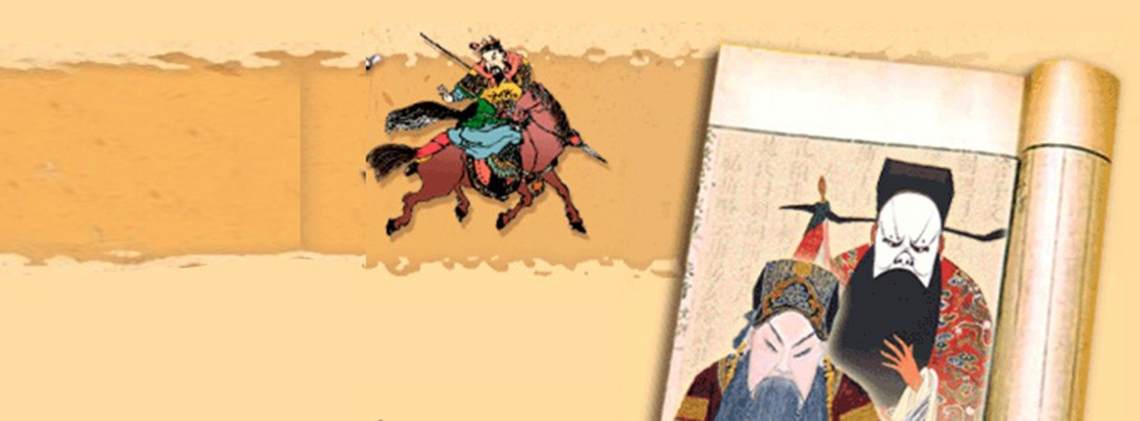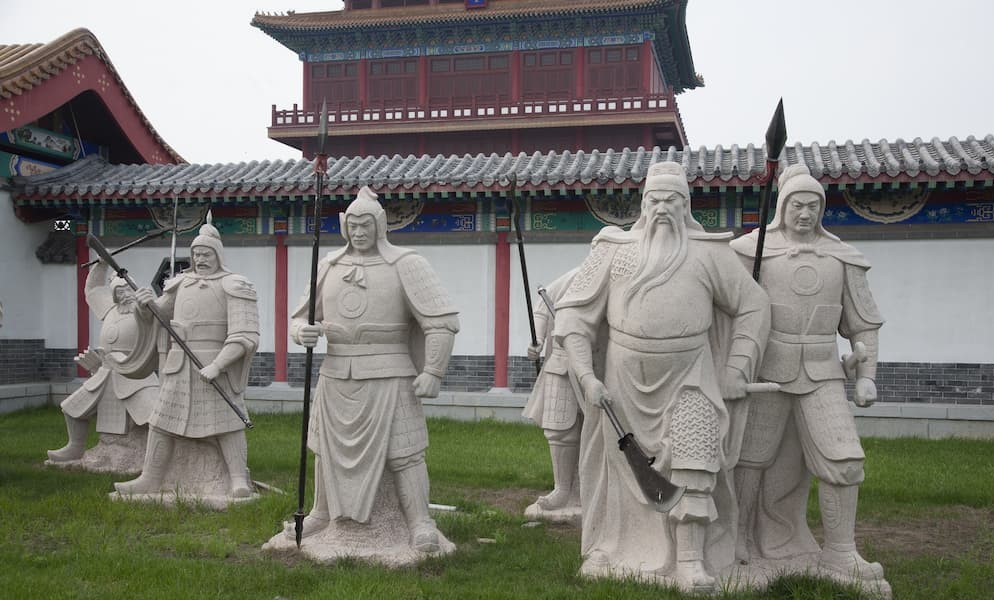
Romance of the Three States
Splendid
Chi Culture
Topic
Romance of the Three States
Sanguo yanyi or Romance of the Three States, attributed to Luo Guanzhong (ca. 1330–1400), was the first historical novel in China to have chapter divisions. The novel deals with the political and military struggles among the three states of Wu, Shu, and Wei. The work clearly delineates the social and political awareness of people in former times and appeals to their ethical and aesthetic consciousness. This novel together with Shuihu zhuan (Water margin), Xiyou ji (Journey to the West), and Jin Ping Mei (The plum in the golden vase) are known as the “four masterworks of the Ming novel.”
In Chinese history, the period from 184 to 265 belonged to the late Eastern Han and the Three States era, a period lasting more than eighty years. During that time, numerous internal wars broke out in China, and a large number of prominent statesmen, military strategists, and men of letters came to the forefront. Folk storytellers of later generations used the history of this era and related legends to write many marvelous stories. As early as the Song (960–1279) and Jin (1115–1234) dynasties, there were some storytellers dedicated solely to telling stories of the late Han dynasty and the Three States; they called these performances the “telling of the three divisions.” During the Zhizhi (1321–1323) reign of Emperor Yingzong of the Yuan dynasty (1271–1368), Sanguo zhi pinghua (Plain narrative of the memoirs of Three States) was published. Later, in the late fourteenth century, Luo Guanzhong collected and sorted the stories of the Three States, and compiled a long novel titled Sanguo zhi tongsu yanyi (Popular narrative of the memoirs of Three States), which is commonly known as Sanguo yanyi. Luo Guanzhong was a scholar of low social status who did not pass the imperial examination in the late Yuan and early Ming periods (ca. late fourteenth century).
Sanguo yanyi mirrors the same rich historical content, historical figures and places, and the main events as the Sanguo zhi (Memoirs of Three States). There are five major divisions in the work: the Yellow Turban bebellion, the Dong Zhuo rebellion, warlords vying for dominance, the tripartite confrontation of the Three States, and the unification of the Three States by the Jin dynasty. One must note that although the stories came from historical works, they were not limited by them. Comparing the artistic descriptions in the Sanguo yanyi with historical records, some changes, large and small, are noticeable. Correspondingly, the strategies described in the work were also adopted partly from historical works, and partly from the work of folk storytellers; for this reason, the facts do not always match up with the true historical events. Thus, Sanguo yanyi should not be treated as a popular history book, nor as a textbook on strategy. Instead, the work should be regarded as a weaving together of legendary stories about ancient heroes. The novel has a twofold nature. The first is that more than thirty stories came from folk storytellers and form the essence of the novel; the second is what was written by Luo Guanzhong, who adapted more than fifty stories based on historical records. This portion, however, is less fictional.
The description of battles and the creation of memorable characters are two of the novel’s outstanding achievements. The battles described in the work are extensive and handled with remarkable skill. Some skirmishes are actually battles of wit and cunning; fights depending on physical strength come secondary in the story. The work does not use much space to describe fierce hand-to-hand fighting; rather, the cause and effects of war are shown, and this makes the story even more colorful and attractive. There are also strange and unpredictable adventures not always drawn from history but from the author’s imagination. A third achievement is the perfect harmony found between the plots and the characters. Thrilling and intricate plots are character-driven; this can mean that intricate plots and extraordinary characters are often matched perfectly. The novel portrays more than 1,200 characters, 1,000 of which are fully named, and 508 of which can be verified in historical sources. Cao Cao (155–220) is treacherous and paranoid; Liu Bei (161–223) is benevolent and caring; Sima Yi (179–251) is tolerant and ruthless; Zhuge Liang (181–234) is wise and resourceful; Guan Yu (d. 220) is valorous and loyal; and Zhou Yu (175–210) is jealous of virtuous and talented people—these characters have left a deep impression on readers. Obviously, these artistic imaginings and the real people in history bear some resemblance to one another; however, they are also different.
After Sanguo yanyi was first published, an unusual, in fact a spectacular scene emerged: ordinary readers scrambled to copy the novel and the work was reprinted many times in numerous editions. Today, the characters and episodes in the novel are well known. A large number of proverbs and enigmatic folk similes come from the stories and characters. People started to revere Liu Bei, Guan Yu, Zhang Fei (d. 221), and Zhuge Liang, and establish temples for them. Since Sanguo yanyi first spread overseas in the sixteenth century, there have been translations into more than sixty languages.




